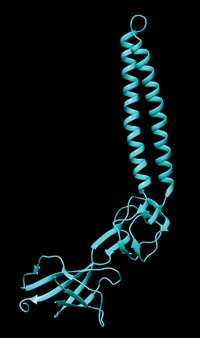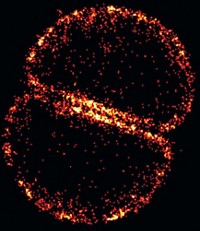Advertisement
Grab your lab coat. Let's get started
Welcome!
Welcome!
Create an account below to get 6 C&EN articles per month, receive newsletters and more - all free.
It seems this is your first time logging in online. Please enter the following information to continue.
As an ACS member you automatically get access to this site. All we need is few more details to create your reading experience.
Not you? Sign in with a different account.
Not you? Sign in with a different account.
ERROR 1
ERROR 1
ERROR 2
ERROR 2
ERROR 2
ERROR 2
ERROR 2
Password and Confirm password must match.
If you have an ACS member number, please enter it here so we can link this account to your membership. (optional)
ERROR 2
ACS values your privacy. By submitting your information, you are gaining access to C&EN and subscribing to our weekly newsletter. We use the information you provide to make your reading experience better, and we will never sell your data to third party members.
Biological Chemistry
Pathogens Turn Tables On Human Immune System
Microbiology: Some bacteria can convert to their benefit a chemical toxin that would otherwise wipe them out
by Sarah Everts
March 28, 2014
| A version of this story appeared in
Volume 92, Issue 13

When the human immune system fights off dangerous bacteria, one line of defense is the chemical weapon itaconate. Immune cells known as macrophages engulf invading pathogens, then produce itaconate, which interferes with bacterial metabolism. But many pathogens have evolved a strategy to sidestep this toxin, according to a new study (Nat. Chem. Biol. 2014, DOI: 10.1038/nchembio.1482).
A number of pathogens, including Yersinia pestis, which causes plague,and
The work also clarifies a conundrum of microbiology: how some pathogens survive the harsh conditions inside macrophages. The key was weaving together seemingly disconnected discoveries that traverse decades, comments Jay Hinton, a microbiologist at England’s University of Liverpool. In the 1960s, researchers discovered that soil bacteria can break down itaconate into pyruvate and acetyl-CoA, two useful nutrients for the microbes. But the work didn’t seem to have much significance for human pathogenesis.
Then, about 10 years ago, researchers discovered that many pathogens must activate the expression of three genes to survive being engulfed by human macrophages. But nobody knew what these genes coded for, Hinton adds. Finally, in 2011, another group of researchers discovered that macrophages produce itaconate when the immune system is turned on. That’s when Berg guessed the itaconate was a poison intended for pathogens and that the three essential genes expressed by pathogens surviving in macrophages coded for itaconate metabolism. It was just a matter of proving the theory, he says.
This is not the first case of pathogens turning the tables on human immune defenses to survive. “It has become increasingly apparent that bacterial pathogens not only neutralize host defense mechanisms but even exploit some of them for nutrients,” comments Michael McClelland, a microbiologist at the University of California, Irvine. “A better understanding of itaconate metabolism in the macrophage might lead to ways to deny the bacterium a nutrient.”





Join the conversation
Contact the reporter
Submit a Letter to the Editor for publication
Engage with us on Twitter